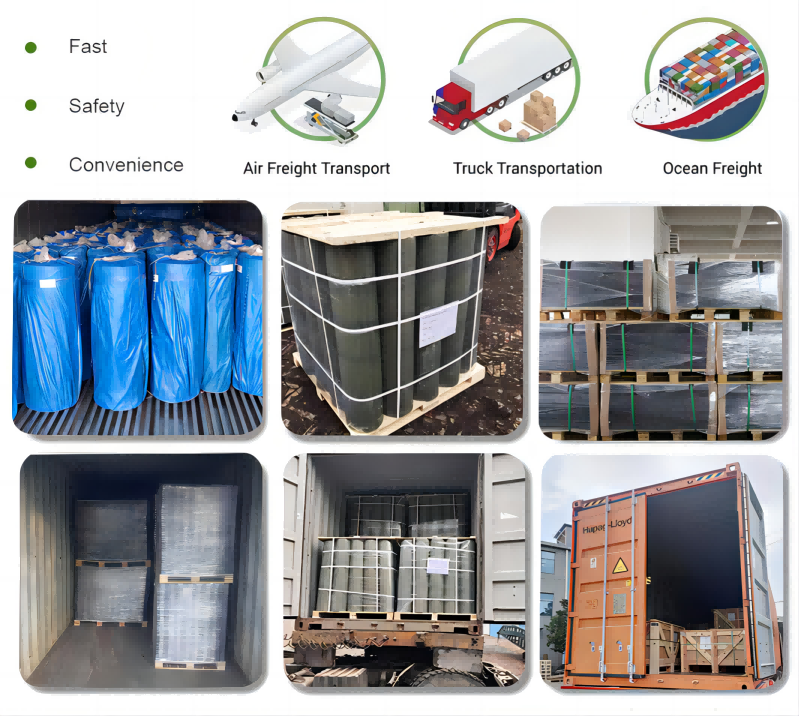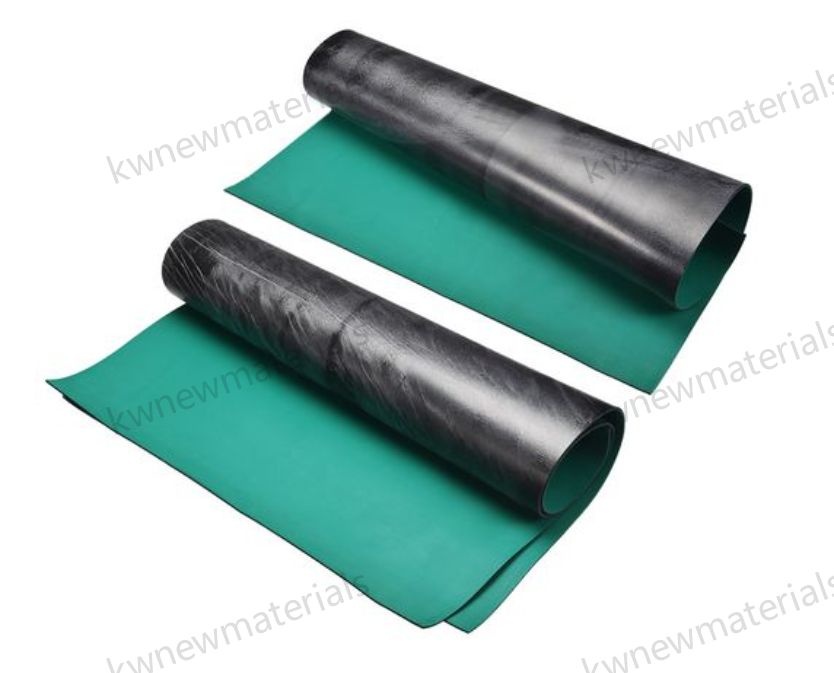Product Description
| Thickness | Width | Length |
| 2-20mm | 500mm--2000mm | 1-50m |
|
Properties Quality |
Hardness ShoreA |
Density g/cm3 |
Tensile strength MPA |
Elongation % |
Volume Resistance |
| Green Side | 70±5 | 1.5 | 6.0 | 300 | 108-109 Ωcm |
| Black Side | 65±5 | 1.6 | 3.0 | 250 | 103-105 Ωcm |
All colors can be customized.
Features
The features of an anti-static rubber mat can vary depending on the specific product and manufacturer. However, here are some common features you may find in anti-static rubber mats:
1. Static Dissipation: The primary feature of an anti-static rubber mat is its ability to dissipate static electricity. It helps prevent the buildup of static charges on the mat's surface, reducing the risk of electrostatic discharge (ESD) that can damage sensitive electronics.
2. Conductive Material: Anti-static rubber mats are made from a blend of materials that have conductivity properties, such as carbon or carbon black. These materials help to conduct electricity and facilitate the dissipation of static charges.
3. Grounding Compatibility: Anti-static rubber mats are designed to be grounded, ensuring a direct path for static charges to flow safely to a ground point. They often have built-in grounding points or come with grounding cords or snaps for connection to an appropriate ground.
4. Durability: Anti-static rubber mats are typically made from high-quality rubber compounds that provide durability and resistance to wear, tear, and chemicals. They are designed to withstand heavy use in industrial environments.
5. Size and Thickness Options: Anti-static rubber mats come in various sizes and thicknesses to suit different application requirements. Common sizes include standard desk or workbench mats, floor mats, and custom-cut mats.
6. Surface Textures: Some anti-static rubber mats have textured surfaces to improve grip and prevent slippage, especially in areas where liquids or oils might be present. Smooth-surfaced mats are also available for applications that require easy cleaning or the use of rolling chairs.
7. Additional Features: Depending on the specific needs of your application, you may find anti-static rubber mats with additional features such as fire-retardant properties, resistance to chemicals, oils, or UV rays, or compatibility with specific industry standards or regulations.
When selecting an anti-static rubber mat, it is vital to review the product specifications and ensure that it meets your particular requirements for static dissipation, grounding compatibility, durability, and any other desired features for your intended use.
Applications
-
s require stringent contamination control, especially in industries like pharmaceuticals, microelectronics, and biotechnology. Anti-static rubber mats help maintain a static-free environment, reducing the risk of ESD that could compromise the cleanliness and integrity of processes and products.
-
Workbenches and Workstations: Anti-static rubber mats are used on workbenches and workstations in industries such as manufacturing, repair, and testing. They provide a safe and static-dissipative surface for tasks involving sensitive components, circuit boards, or electronic devices.
-
Assembly Lines: Anti-static rubber mats can be integrated into assembly line workstations where ESD protection is necessary. They help minimize static electricity buildup and discharge, ensuring the safe handling and assembly of electronic or sensitive components.
-
Hospitals and Healthcare Facilities: In environments with sensitive medical equipment and devices, such as hospitals and healthcare facilities, anti-static rubber mats are used to create static-safe zones. They prevent static charges from damaging electronics or interfering with the proper functioning of medical equipment.
-
Home and Office: Anti-static rubber mats can also be used in home or office environments where individuals work with electronic devices, such as computers and laptops. Placing a mat under these devices can help dissipate static charges and reduce the risk of ESD-related issues.
It is important to note that the specific application of an anti-static rubber mat may vary depending on factors such as the level of ESD protection required, the industry standards to be met, and the specific needs of the workplace or environment.

Why Us


Packaging & Transportation

 Kingwork New Materials Co.,Ltd
Kingwork New Materials Co.,Ltd
